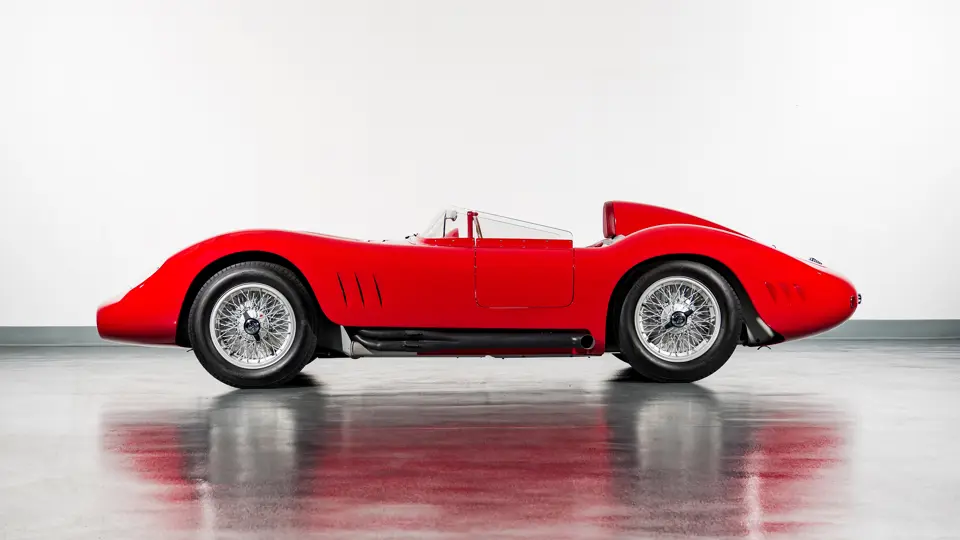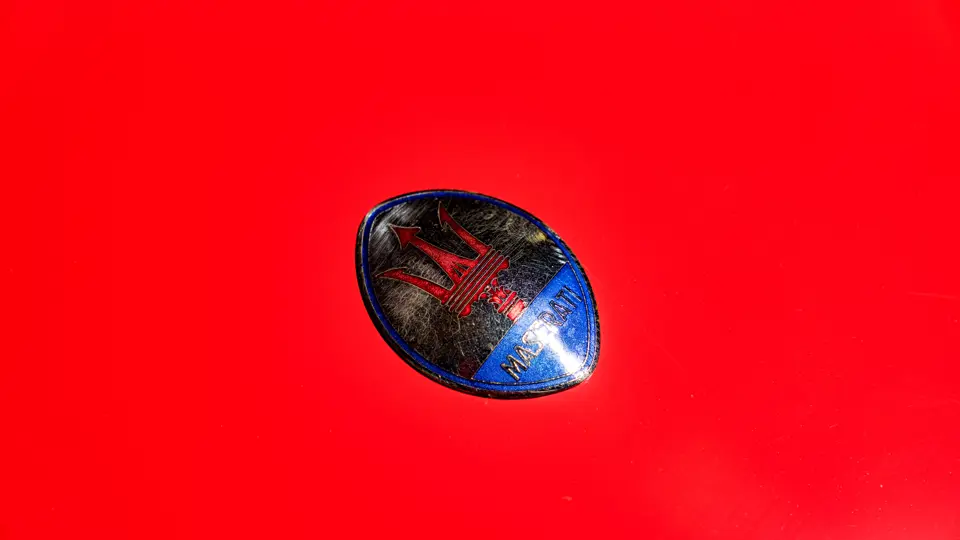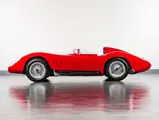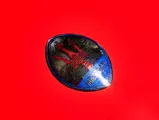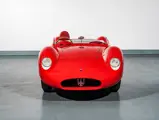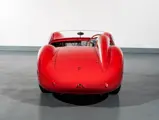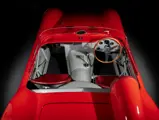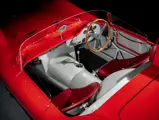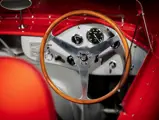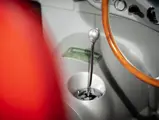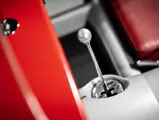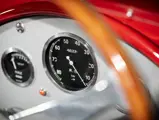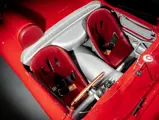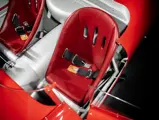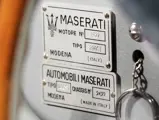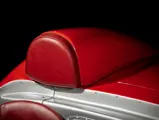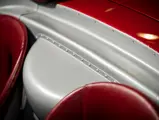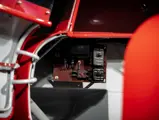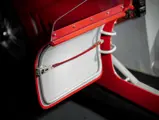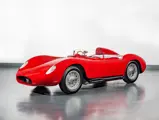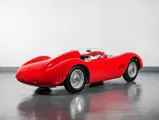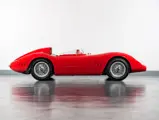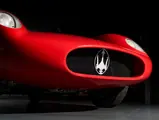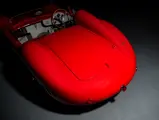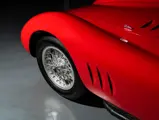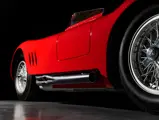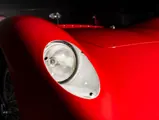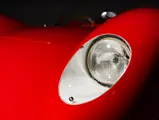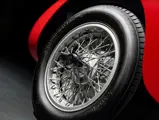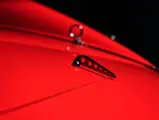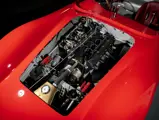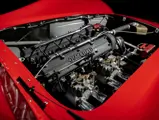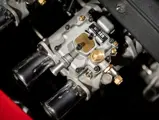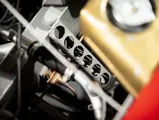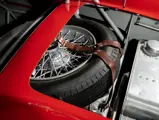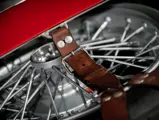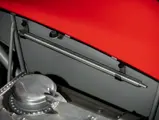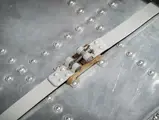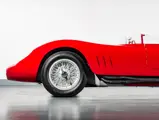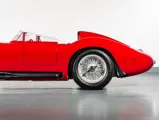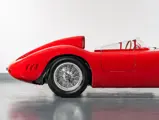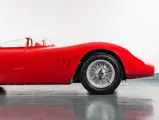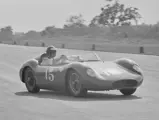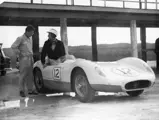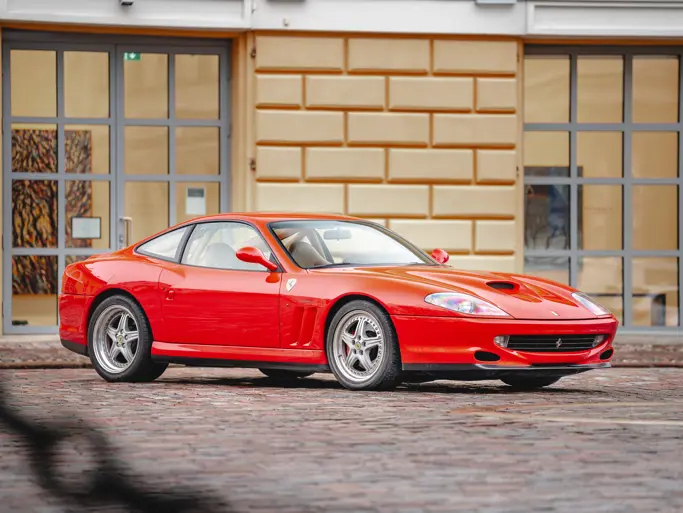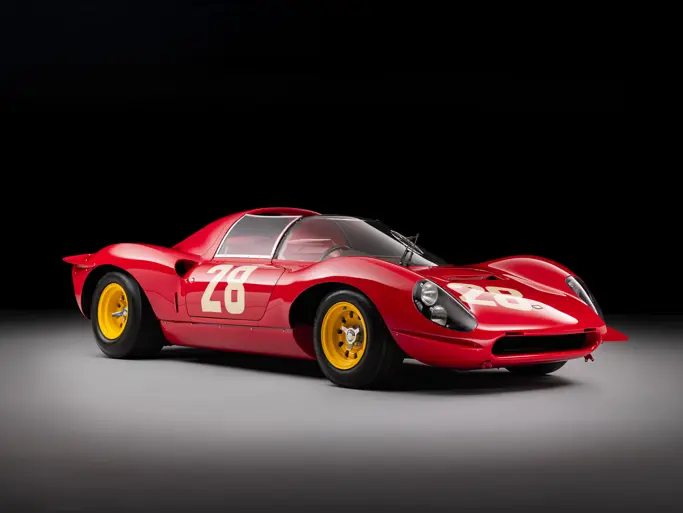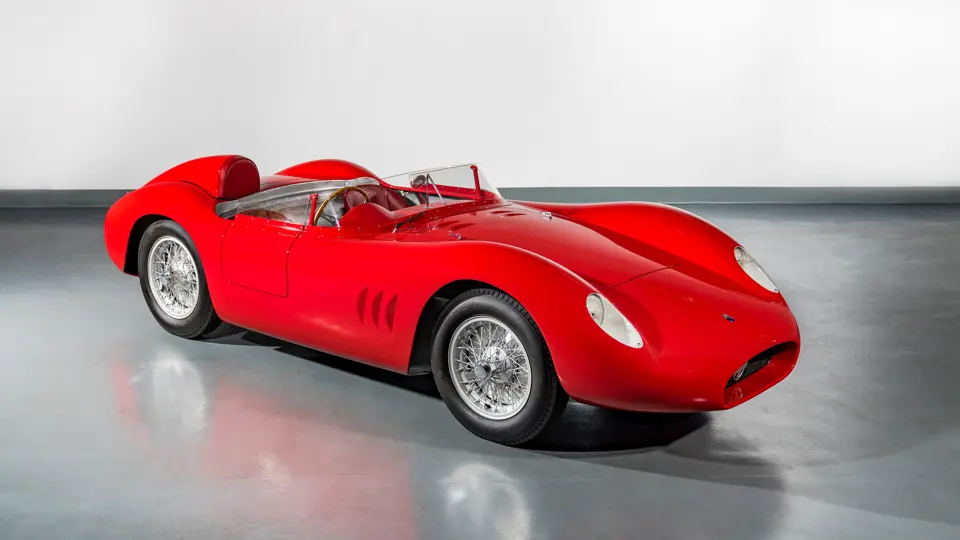
1957 Maserati 200SI by Fantuzzi
{{lr.item.text}}
$3,112,500 USD | Sold
Offered from the Oscar Davis Collection
{{bidding.lot.reserveStatusFormatted}}
- One of 28 200S/SI chassis constructed by Maserati between 1956 and 1958
- Driven by John Fitch to multiple class victories in the 1957 and 1958 racing seasons
- Loaned to Camoradi for the 1960 Cuban Grand Prix, in which it was driven by Dan Gurney
- Retained, in unrestored state, from 1978 until 2007 by the Fielding family of Forres, Scotland
- One of only a handful of 200S/SI chassis to retain its numbers-matching engine and body
- Eligible for numerous vintage events including the Mille Miglia Storica, Le Mans Classic, and Goodwood Revival
“The 200SI was one of the best handling front-engined, drum-braked racing cars from that period. It was wonderful to hang on in curves with it, and it clearly followed your line. It was a pleasure to drive.”
John Fitch
Although occasionally still achieving respectable results with their aging A6GCS, by 1954 Maserati had acknowledged its creeping obsolescence and were simultaneously developing their new 150S and 200S models as suitable replacements. Somewhat illogically designated the Tipo 53 and Tipo 52, respectively, both shared broadly similar conventional tubular chassis, as well as 1.5- and 2-liter versions of the same all-new, twin-plug four-cylinder engine. Front suspension on both models was via conventional double wishbones and coil springs, although the 150S employed a De Dion tube and transverse leaf-spring arrangement at the rear while the 200S—initially at least—used a live axle. However, following complaints from early 200S customers, rear suspension on all but the first few cars was subsequently modified to mirror that of its smaller sibling.
Development of the 200S proved troublesome, with transmission problems plaguing the car in longer distance and road racing events. However, wins in 1956 for Jean Behra at the Gran Premio di Bari and Gran Premio di Roma salvaged considerable pride, as did Stirling Moss and Cesare Perdisa’s fine 2nd place to Mike Hawthorn and Peter Collins’ Ferrari 500 Testa Rossa in that year’s Supercortemaggiore at Monza. The move to Appendix C regulations for 1957 precipitated the car’s transformation into 200SI, or Sport Internazionale, guise—a move which saw such cars fitted with a full-width windscreen, two functioning doors, provision for a spare wheel, and a somewhat makeshift fabric top to ensure compliance.
RUNNING WITH THE EAST COAST SCCA FRATERNITY
One of just 20 200SI-specification cars constructed, chassis 2427 was completed at Maserati’s fabled Modena works on 9 August 1957. As with all but five 200S/SI chassis, it was constructed with the later, and more attractive, Fantuzzi coachwork; the car was further specified with Jaeger instruments, Cibie headlights, and Pirelli-shod Borrani wire wheels. It was originally imported by United States concessionaire Maserati Corporation of America on behalf of its first owner, New York-based philanthropist and respected art authority Vincent Dyckman Andrus. The car was destined to be driven by road racing legend John Fitch—by this time a winner of both the Sebring 12 Hours and the RAC Tourist Trophy—principally in East Coast SCCA events.
Fitch’s first competitive outing in 2427 was in the Queen Catherine Cup at Watkins Glen on 21 September 1957, in which he finished a promising 4th, and 1st in class, with Bob Holbert’s Porsche 550RS victorious. The following weekend, both Fitch and Maserati travelled to Bridgehampton, where the 25-lap SCCA feature race included no less than four Briggs Cunningham-entered Jaguar D-types, and Phil Hill in a Ferrari 857S. Against formidable opposition, Fitch finished 5th, and once again took a class victory, with Walt Hansgen securing overall honors for Cunningham.
In December 1957, Fitch and 2427 headed south for the popular International Bahamas Speed Week; the car now sported a new white-with-blue-underbelly color scheme in place of its previous red. A preliminary five-lap heat for the Governor’s Trophy race yielded an excellent 2nd overall and 1st in class behind Ed Crawford’s Porsche 550RS—and ahead of similar cars driven by the Rodriguez brothers, and Olivier Gendebien’s Ferrari 500 TRC—but the feature race itself ended in retirement. However, the Nassau Memorial Trophy race the following day provided the most significant result of the car’s career, with Fitch finishing 3rd overall—and 1st in class yet again—beaten only by Stirling Moss’ Scuderia Buell Ferrari 290MM and Ritchie Ginther’s fearsome 5-liter John Edgar-owned Ferrari 410 Sport.
The East Coast SCCA fraternity reconvened on 27 April 1958 at Lime Rock Park, Connecticut, although in the 20-lap under 2-liter race, Fitch could manage only 2nd overall (and 2nd in class) to Gaston Andrey’s Ferrari 500 TRC. However, normal service was resumed when the pair returned in June, with Fitch finishing 4th overall, and 1st in class once again, in the feature 40-lap Sports Car Race, behind Walt Hansgen’s new Lister-Jaguar, Bob Oker’s Aston Martin DBR2, and Holbert’s Porsche 550RS.
By mid-1958, Fitch was evidently at a crossroads with 2427. In terms of pace, he was, unsurprisingly, some distance away from the newer and more powerful Cunningham Listers, yet in his own class he was virtually unchallenged. Inquiries were made as to the cost of a new, factory-built 2.5-liter engine, although his (and Andrus’) subsequent decision to offer the car for sale suggests that either they thought better of the idea, or that the cost was prohibitive. Either way, the July SCCA meeting at Lime Rock marked Fitch’s final outing in the car; his 3rd overall and final class win behind the two Cunningham Listers of Crawford and Hansgen ensured that the pair signed off on a high.
2427 HEADS SOUTH
In September 1958, 2427 was advertised for sale by Carroll Shelby Sports Cars Inc.; the car was purchased shortly thereafter by Floridian John J. Packo, who had previously campaigned a Lotus XI in local SCCA events. However, despite reinstating the original red paintwork, “J.J” apparently raced the car only once, at Boca Raton in March 1959, where he finished 2nd in the Preliminary race to Lucky Casner’s Ferrari 250 Testa Rossa and then 3rd in the feature race behind the similar cars of Jim Hunt and E.D. Martin.
As competitors on track, Packo and Casner—proprietor of the ambitious Camoradi team—had forged a close friendship, and when one of Casner’s two Maserati Tipo 61 Birdcages failed to materialize for the Cuban Grand Prix of February 1960, it was Packo who generously stepped in and lent the team his car. Duly entered by Camoradi, and with no lesser driver than Dan Gurney at the wheel, 2427 unfortunately retired in the race, although not before sharing track time in the rarefied company of winner (and Camoradi teammate) Moss, Maurice Trintignant, Jack Brabham, Carroll Shelby, Masten Gregory, and both Rodriguez brothers.
THE PRIDE OF COLLECTORS WORLDWIDE
Having been advertised for sale in February 1963, this car was duly purchased by emerging Ferrari and Maserati collector Carl Bross of Bloomfield Hills, Michigan; it was a stablemate to his ex-Moss, 1956 Italian Grand Prix-winning 250F. However, after Bross’ death in 1971, much of his collection, including 2427, passed to Anthony Bamford of Rocester, United Kingdom, before joining the collection of discerning Scottish Maserati enthusiast Ray Fielding in 1978. Exhibited for many years in the Doune Motor Museum near Falkirk, Scotland, the car remained in the Fielding family for almost three decades, and remerged in highly original condition before being sold to Anton Bilton, of London, in July 2007.
In late 2007, 2427 was entrusted to renowned restorers GPS Classic of Soragna, Italy, who embarked on an overhaul of its the chassis, numbers-matching engine, and gearbox with the objective of preparing the car for vintage racing. The restoration of its highly prized original body, meanwhile, was entrusted to Quality Cars of Padova. Duly completed and resplendent once again in its original color, it made its post-restoration debut in the 2008 Mille Miglia Storica. However, Bilton kept the car only briefly, selling it to Dr. Wolf Zweifler of Munich, Germany—who has owned a remarkable series of Maseratis from this wonderful era—in July 2008. Dr. Zweifler campaigned the car extensively over the next few years, including several participations in the Ferrari Maserati Challenge, 2009 Mille Miglia Storica, and the 2010 Le Mans Classic, before selling the car.
After its acquisition by Oscar Davis in 2012, Leydon Restorations of Lahaska, Pennsylvania began the painstaking task of bringing 2427 back to its as-built mechanical and cosmetic specification. The safety structure previously added was removed, interior panels were reworked to their original appearance, and original components were refitted—all to return this Maserati to its original 1957 presentation. It has remained in the Oscar Davis Collection ever since.
Although the Maserati 200S/SI did little to distinguish itself in contemporary European long-distance events, it proved highly effective in shorter-format races in North America—a fact underlined by John Fitch’s considerable achievements driving this particular car. However, the impressive competition record of 2427 is but one facet of its remarkable life; its subsequent enjoyment, preservation, documentation and restoration by some of the world’s most discerning collectors being no less noteworthy. Its impressive provenance is substantiated by an accompanying history file containing copies of Maserati factory build sheets, research and correspondence, photo documentation of its restoration, and past FIVA identity cards dated 2007 and 2009.
Fastidiously maintained in the Oscar Davis Collection and impeccably presented today, it offers extraordinary versatility as well as seemingly limitless opportunities to enter the world’s most exclusive vintage touring and racing events, and it would assuredly prove a worthy addition to any significant car collection.

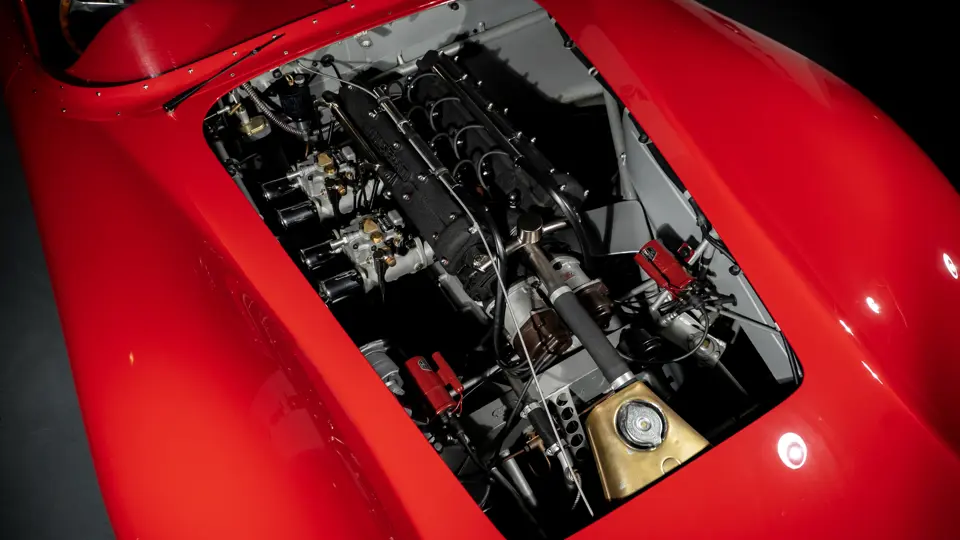
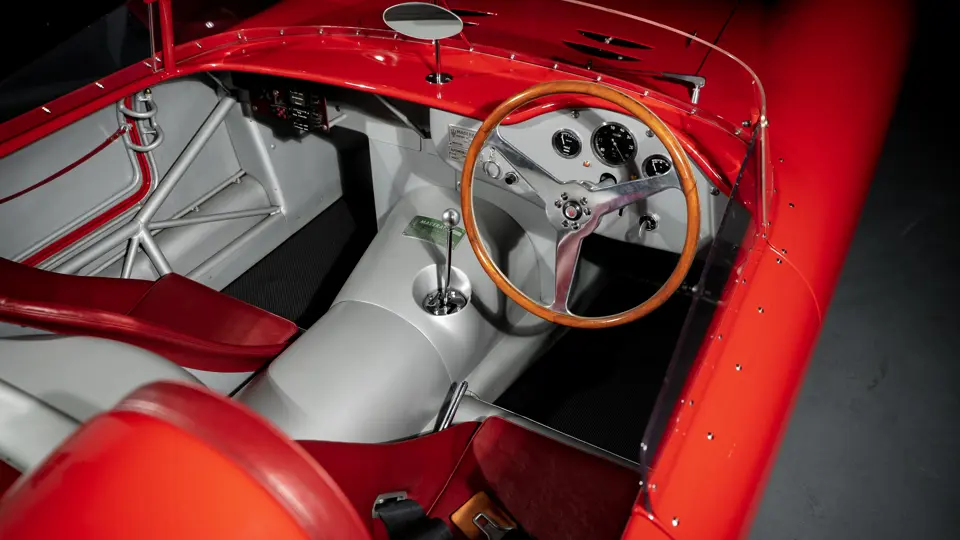

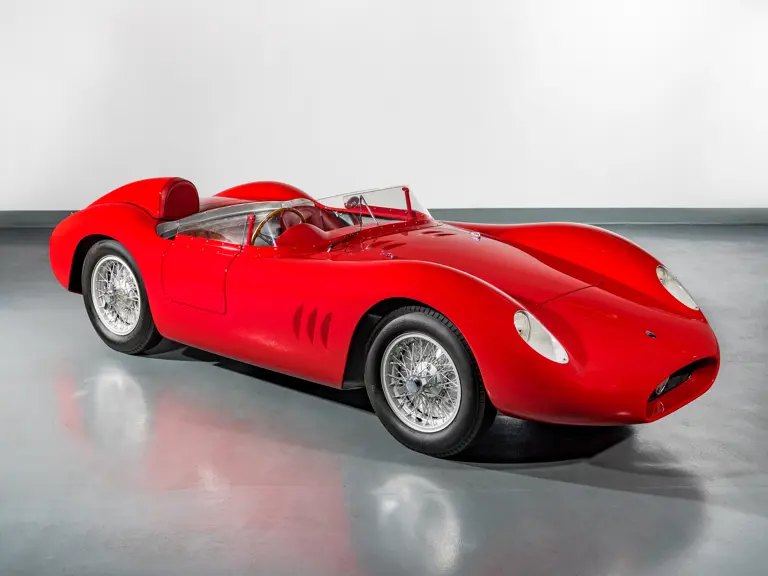
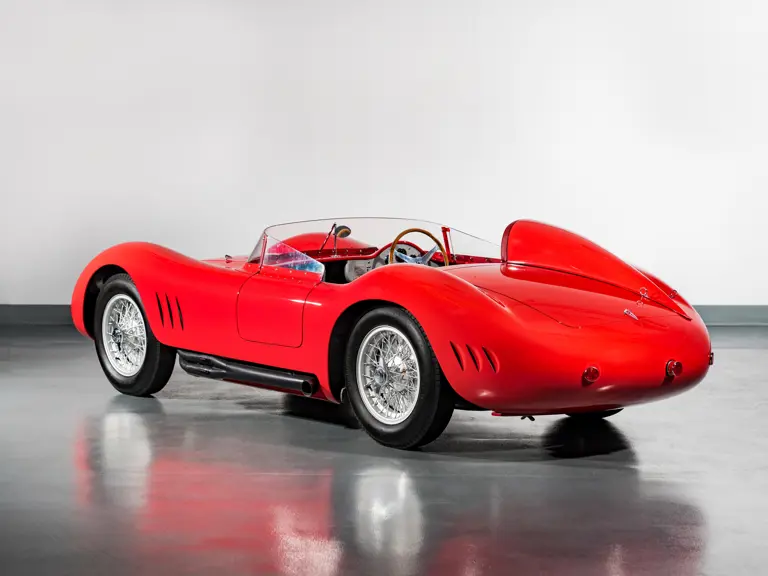
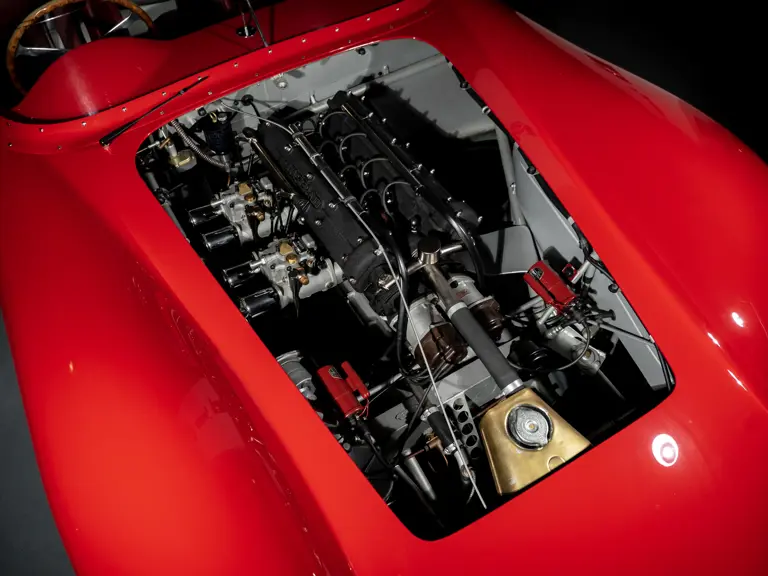
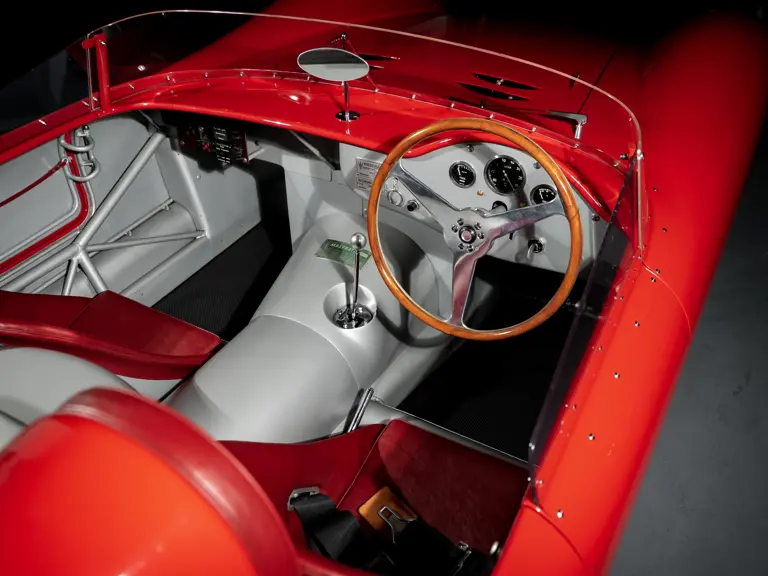
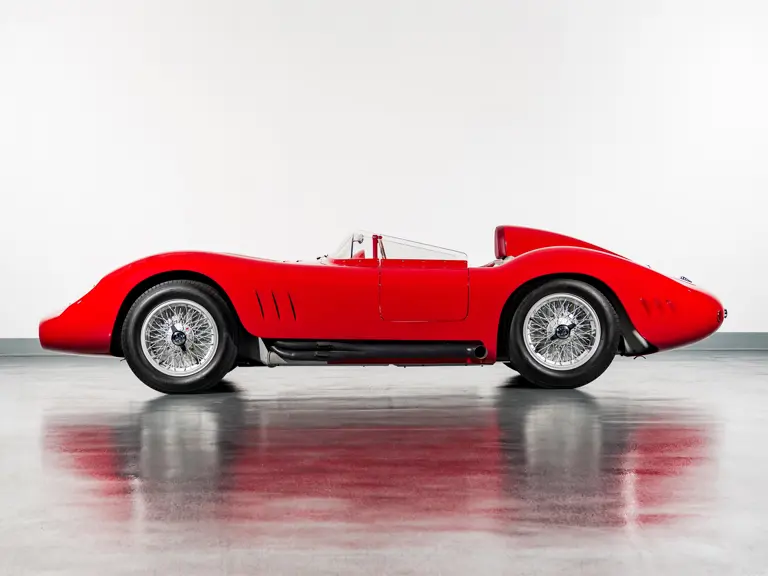

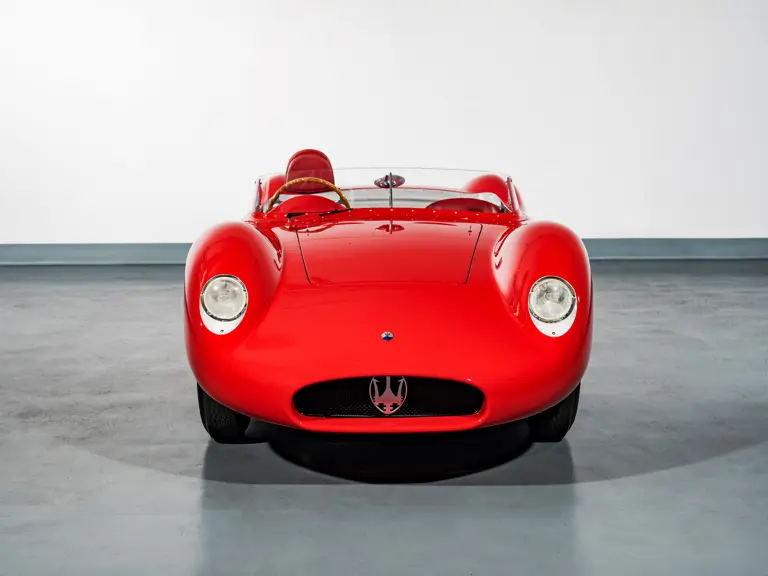

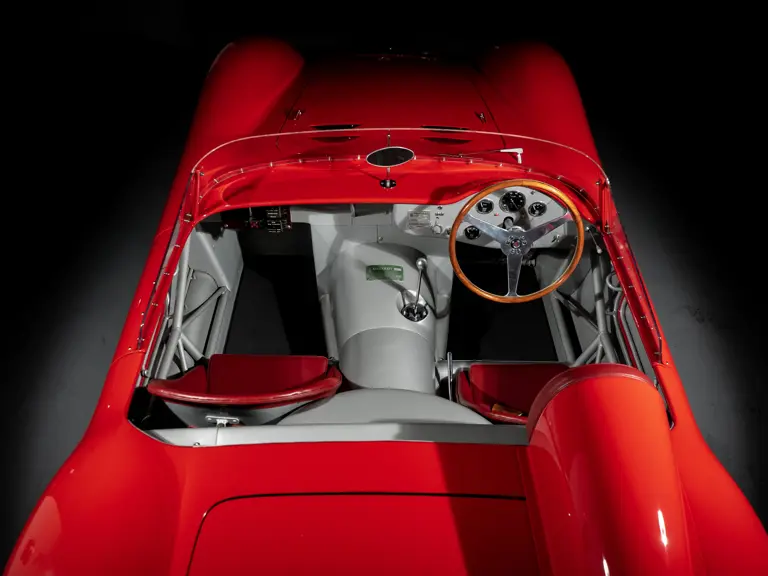
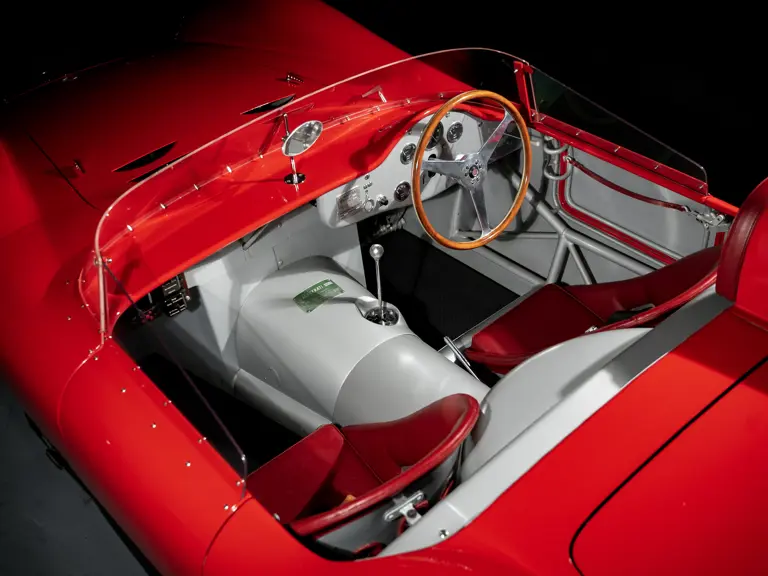

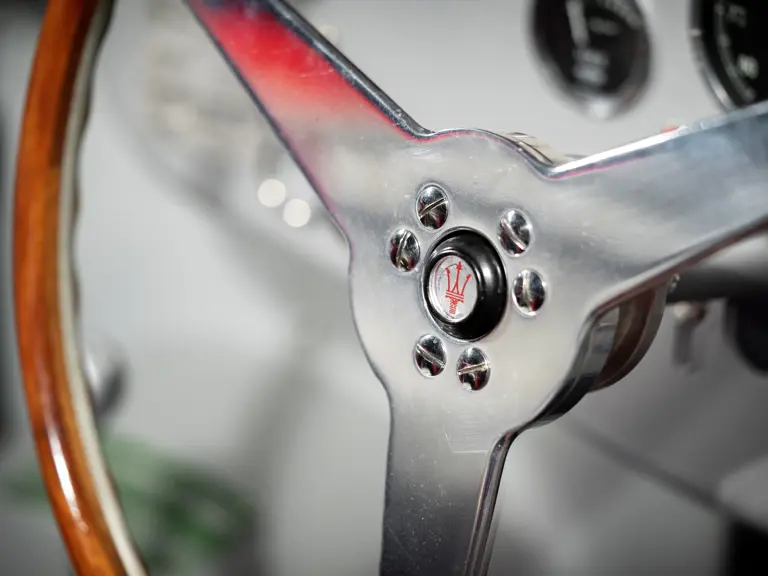
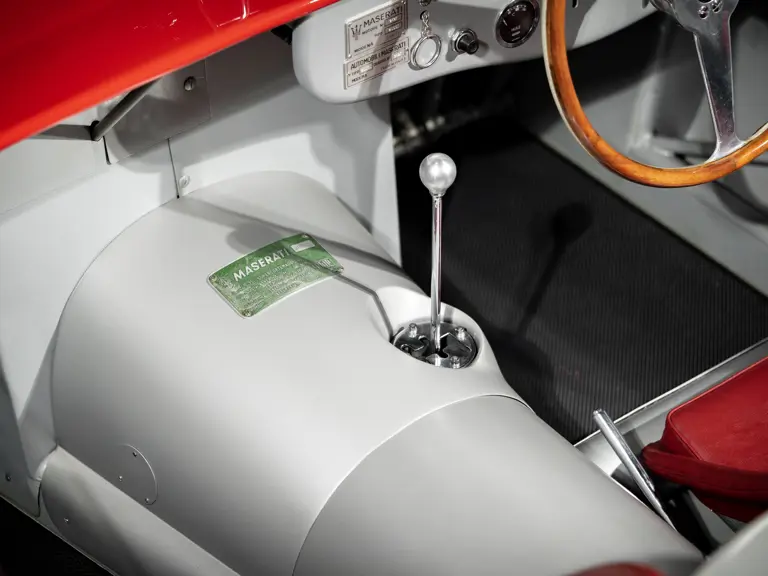
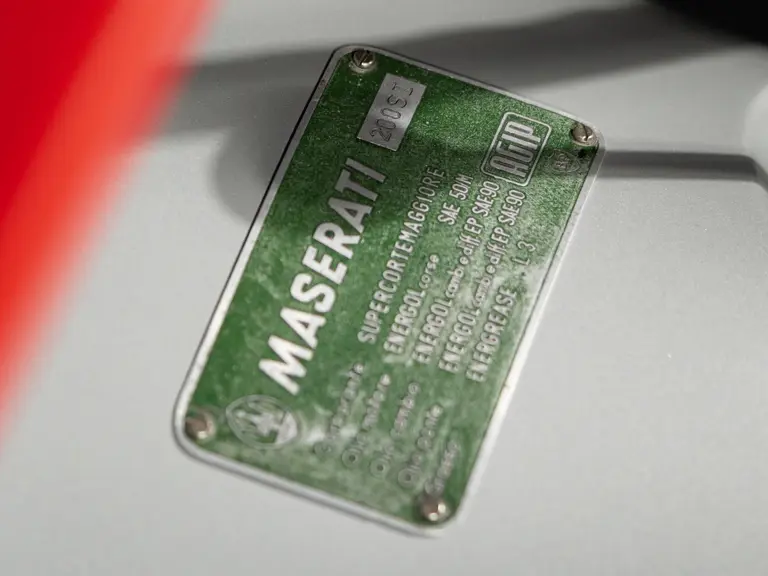
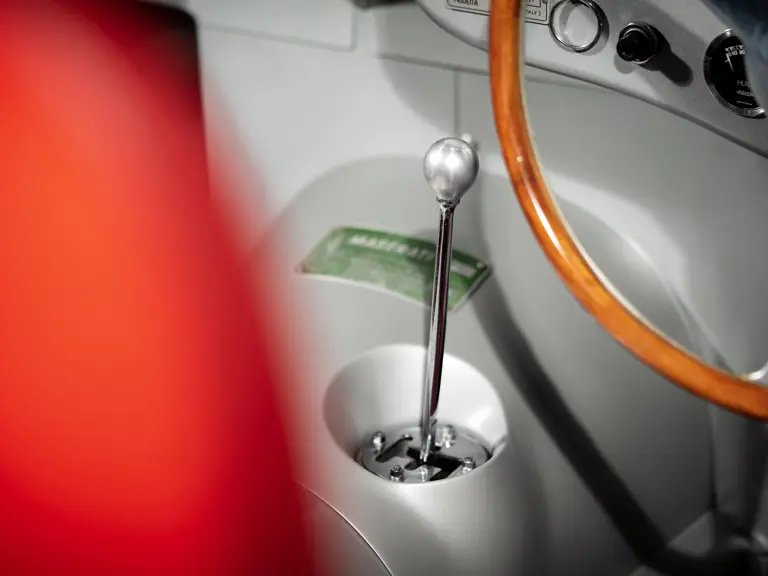
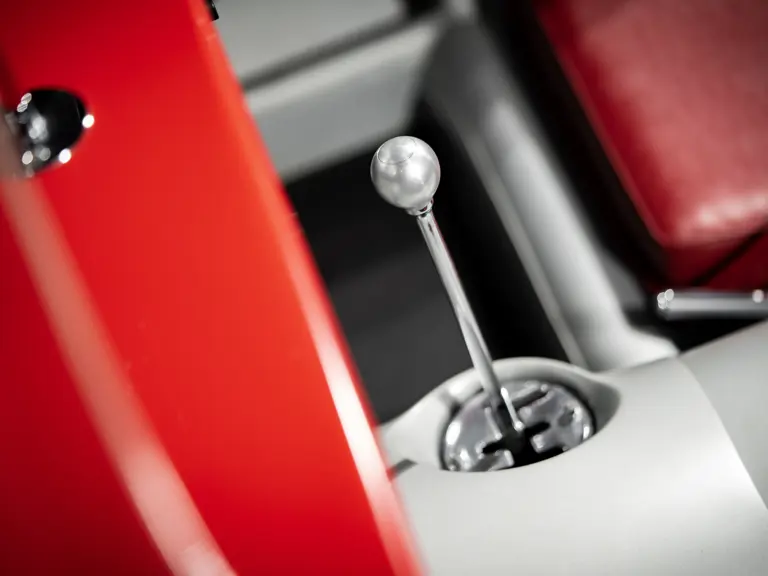
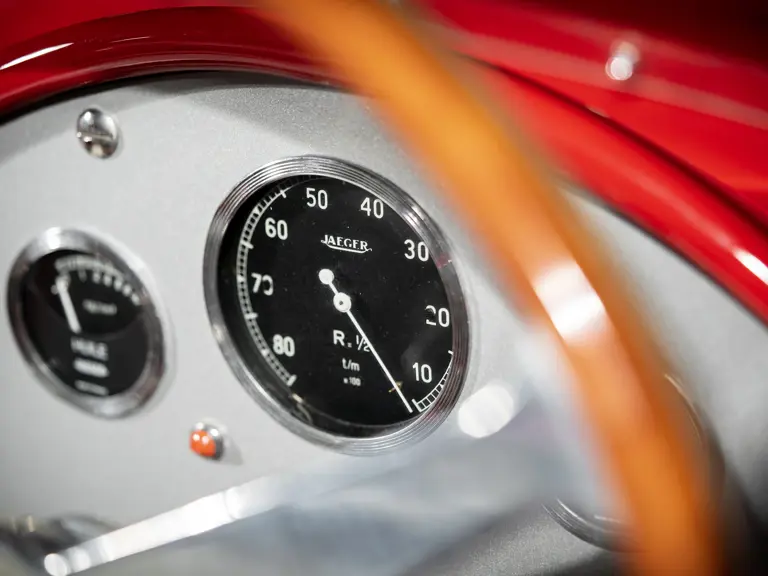
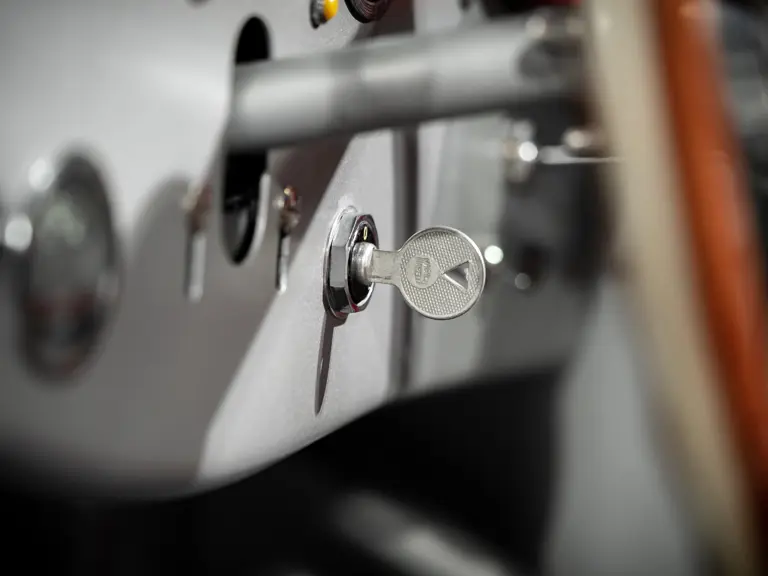
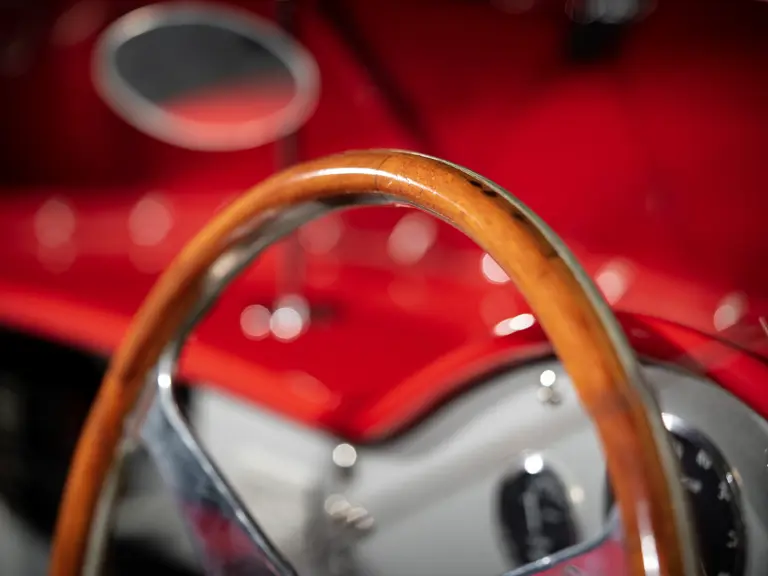
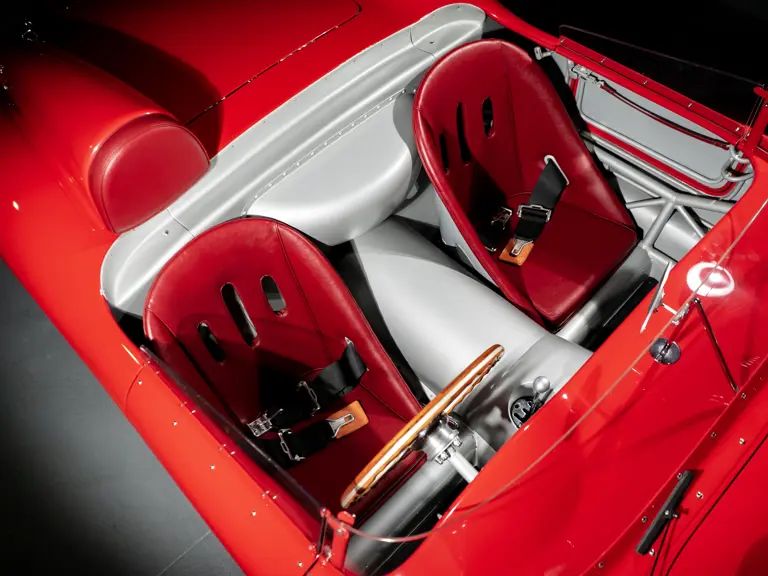

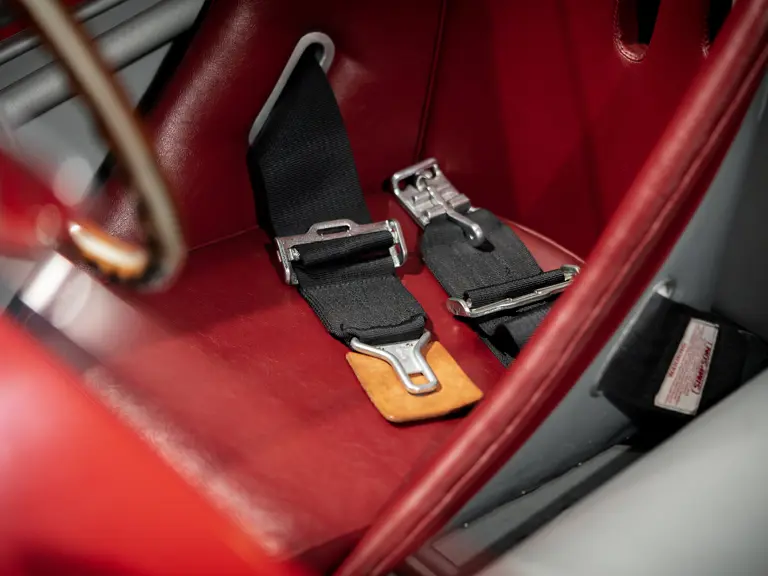

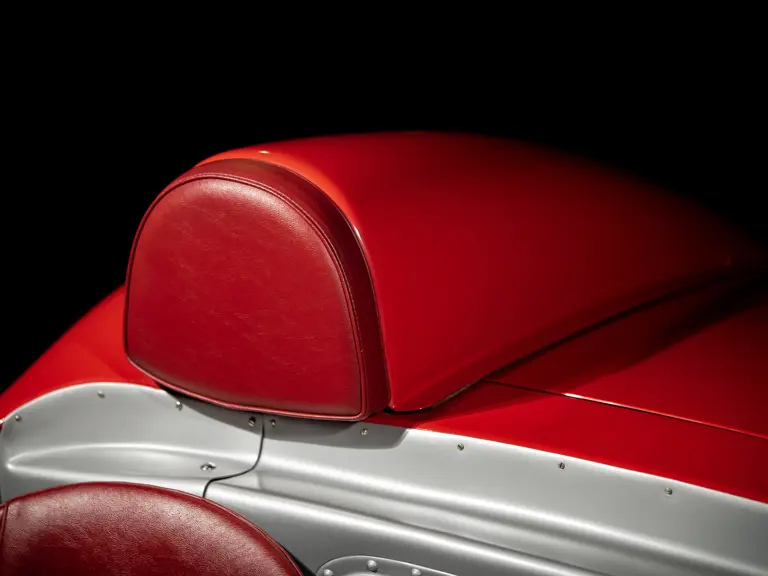
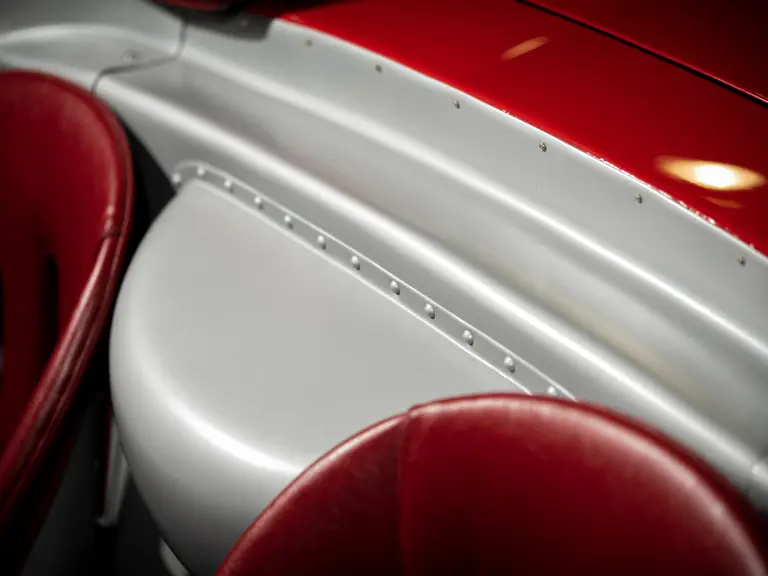
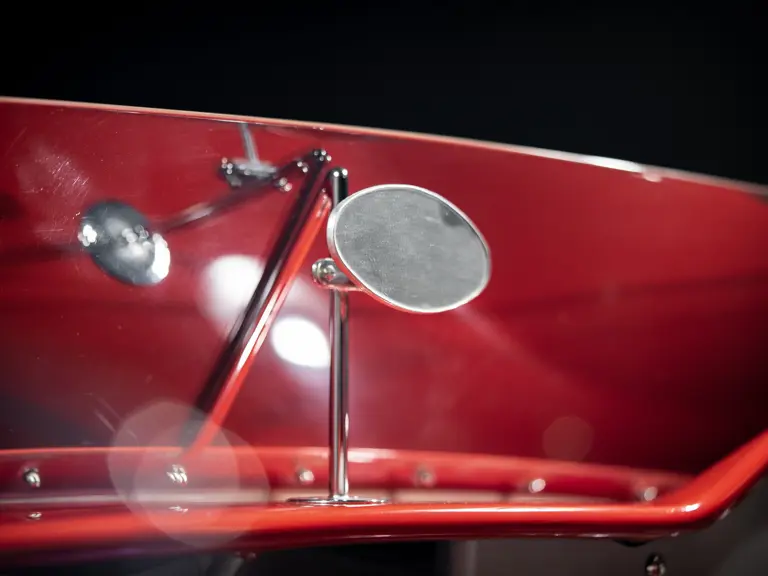
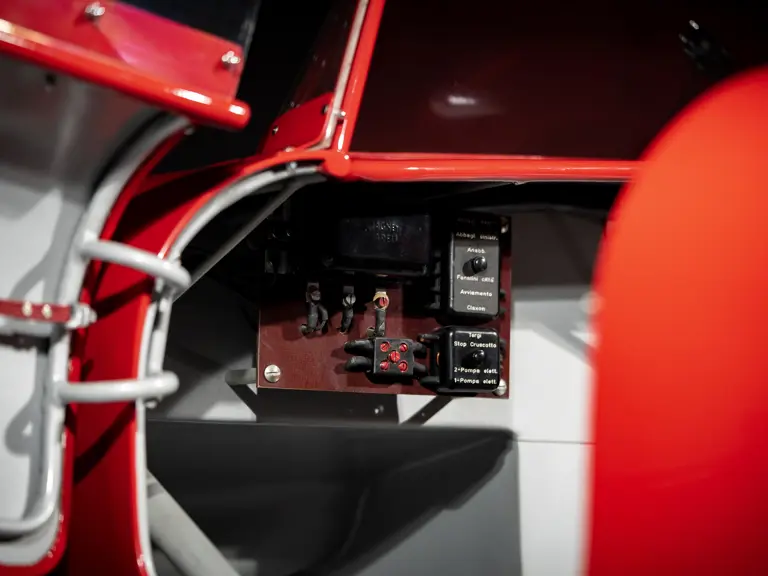


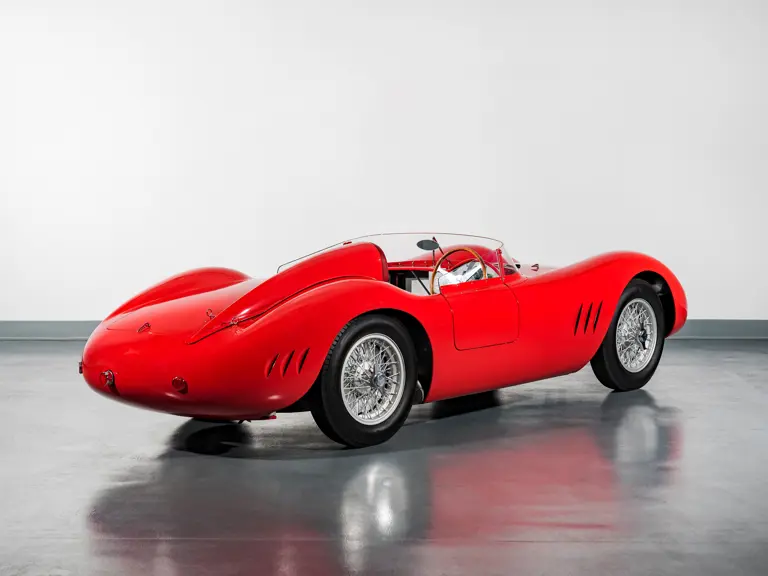
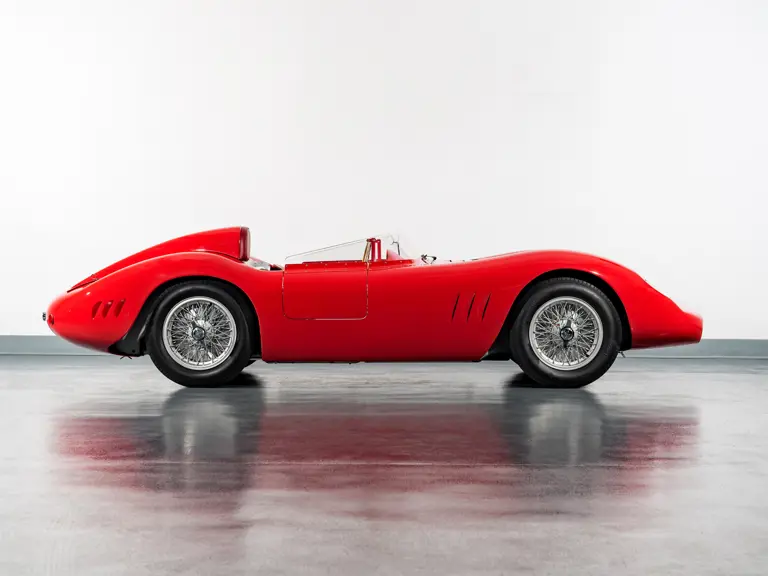
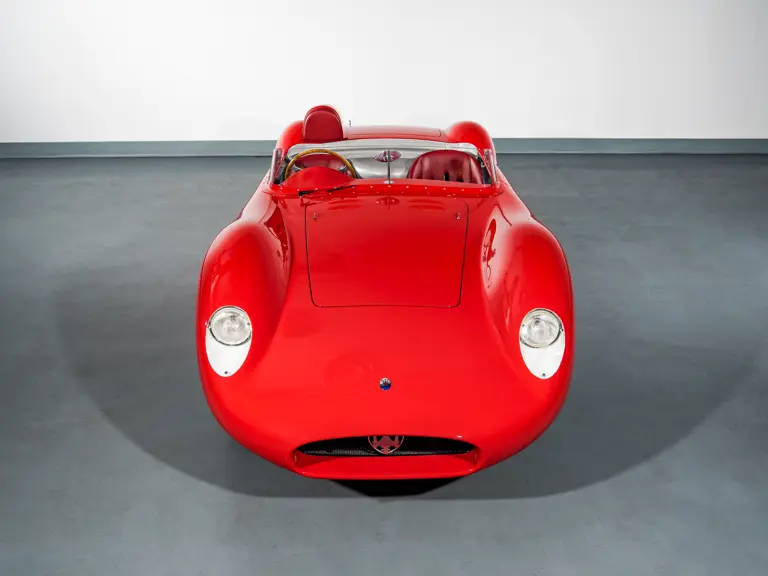

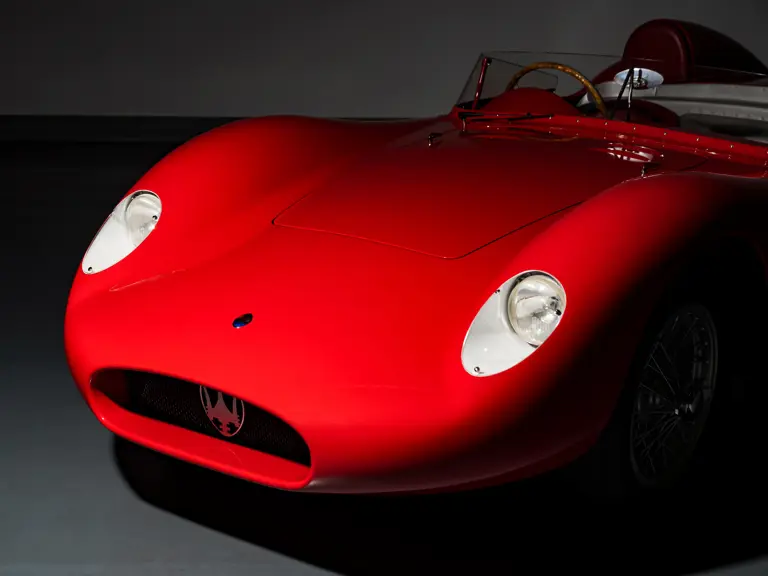
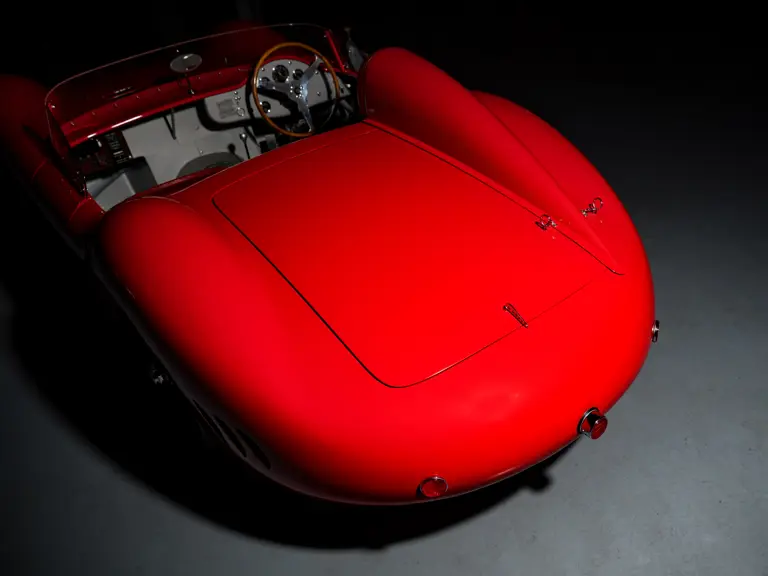

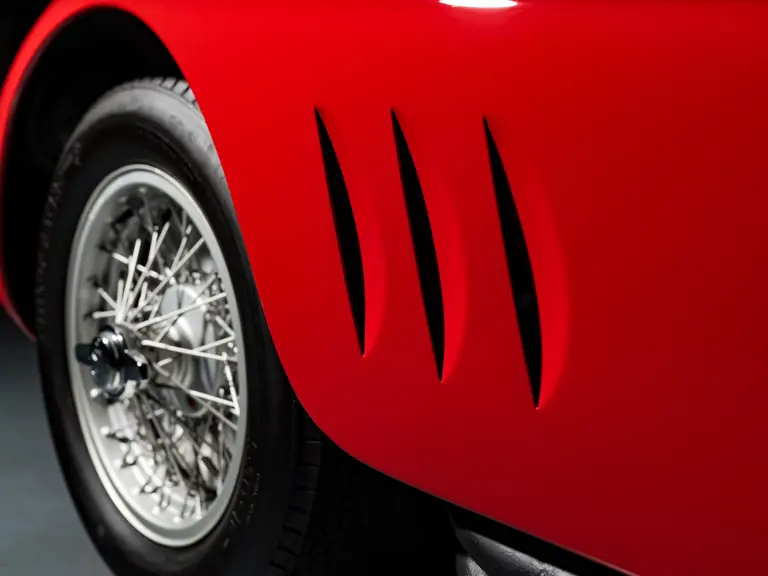

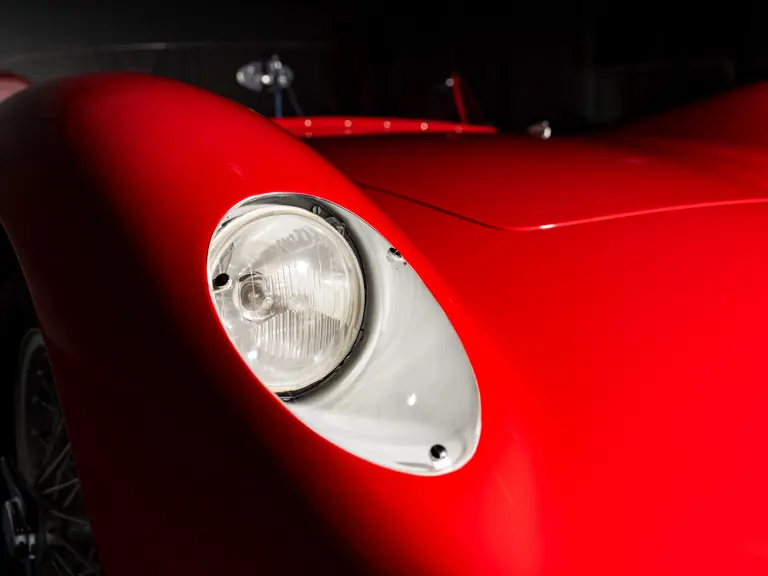
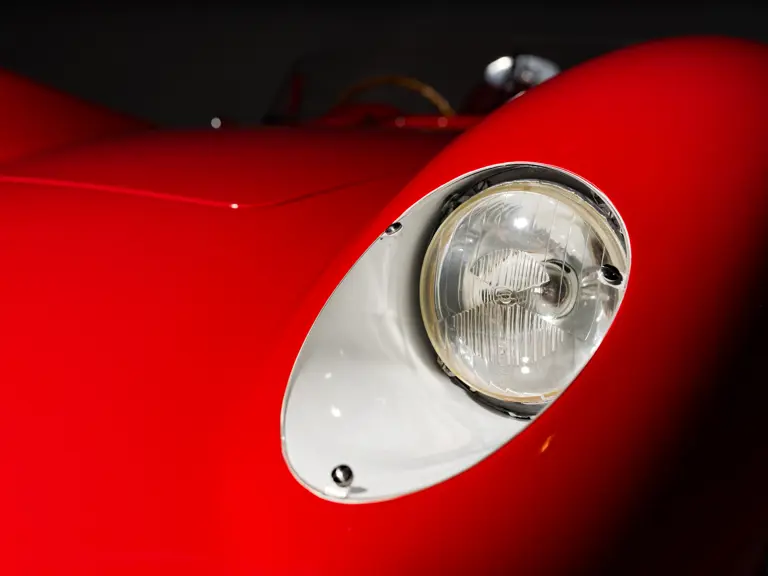
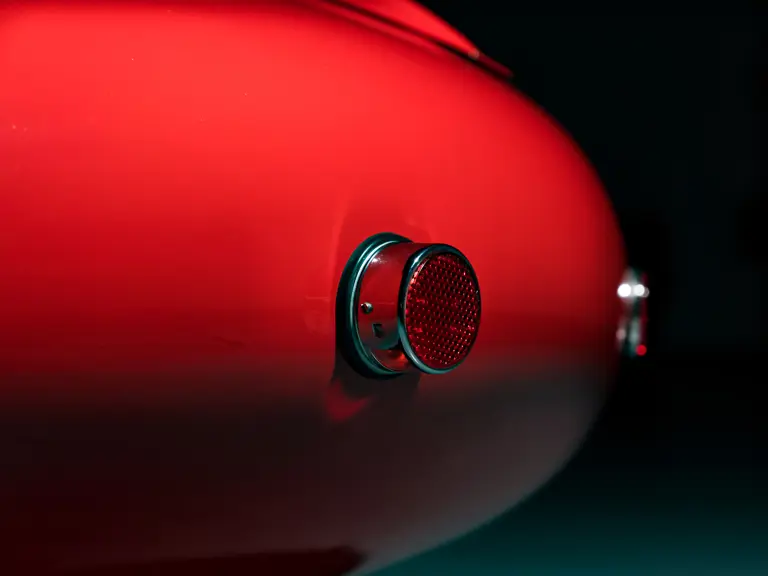
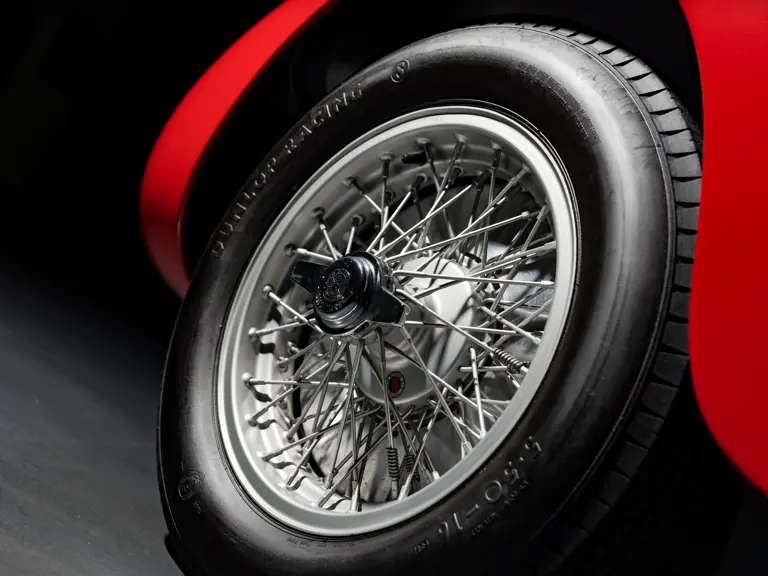
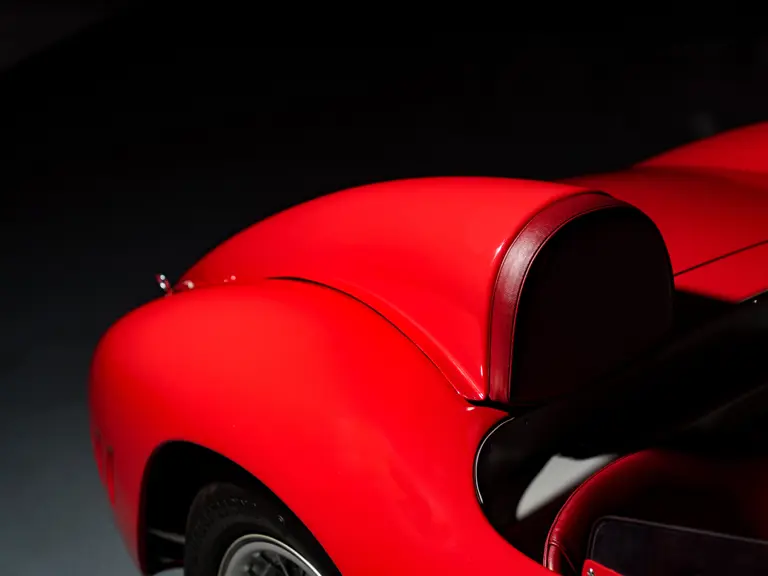

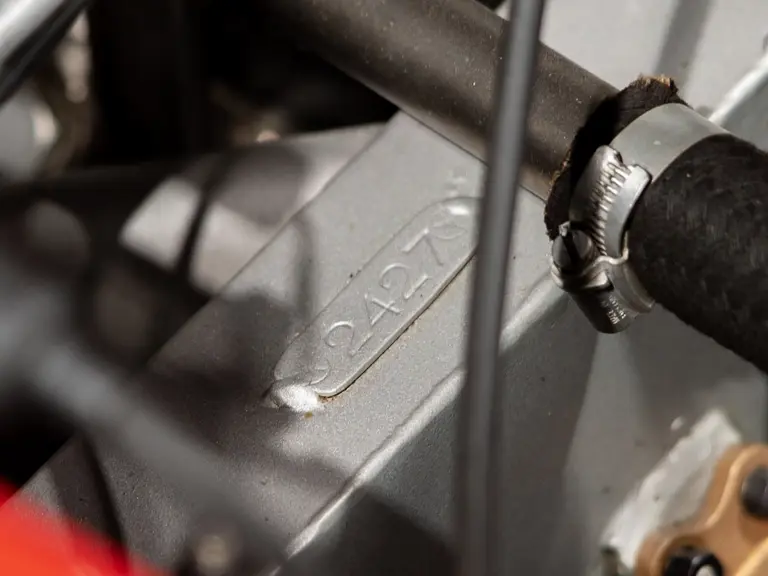

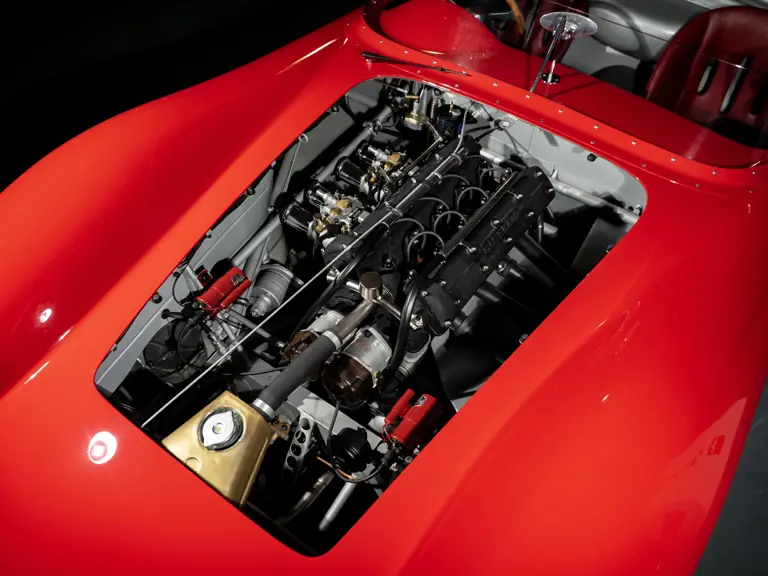
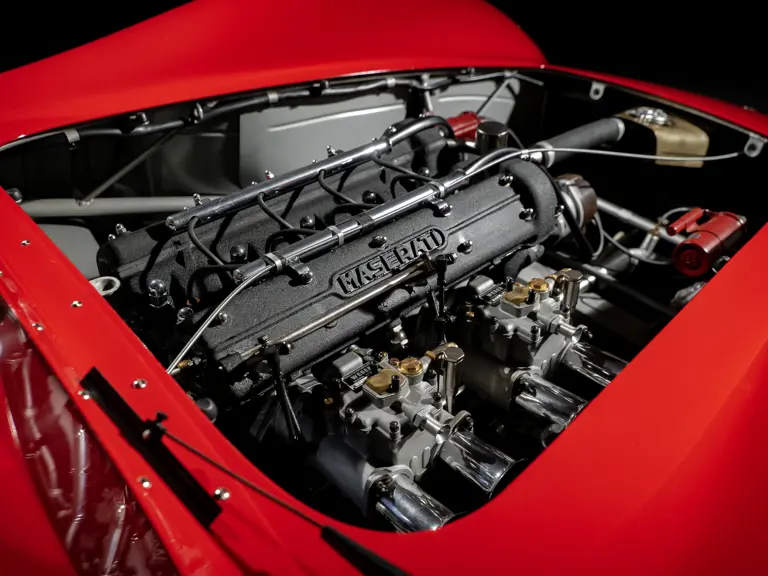

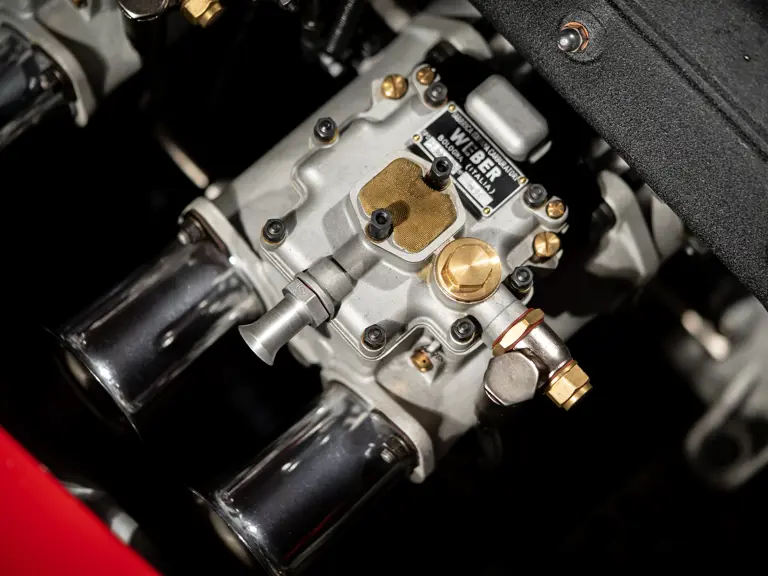
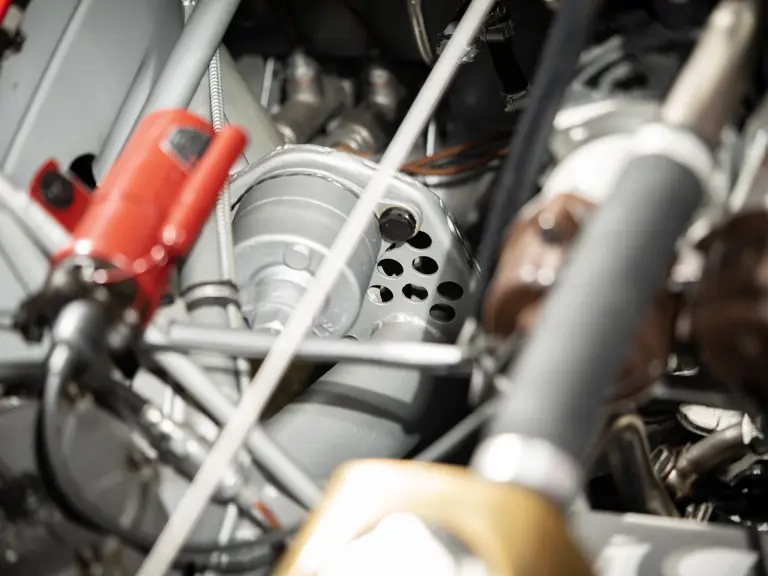
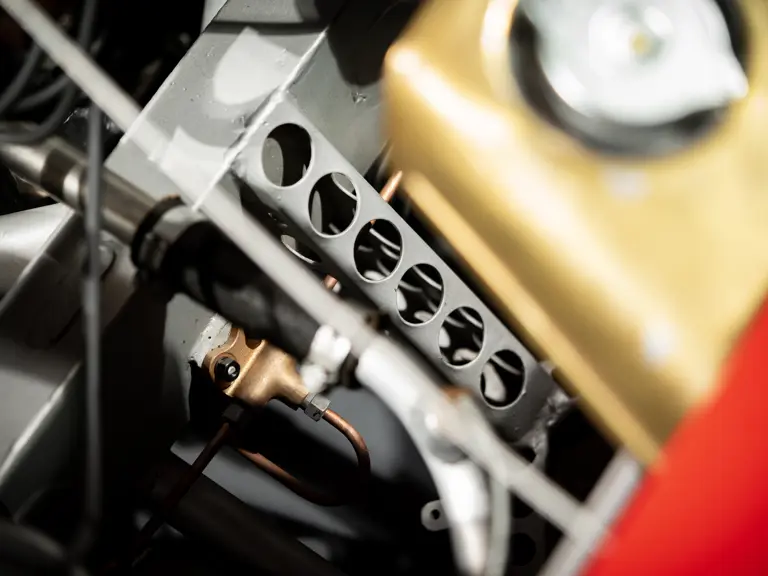

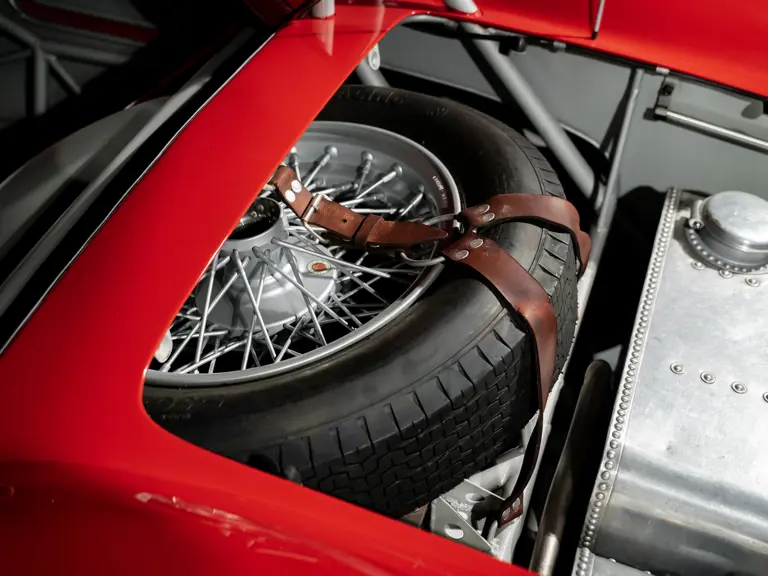
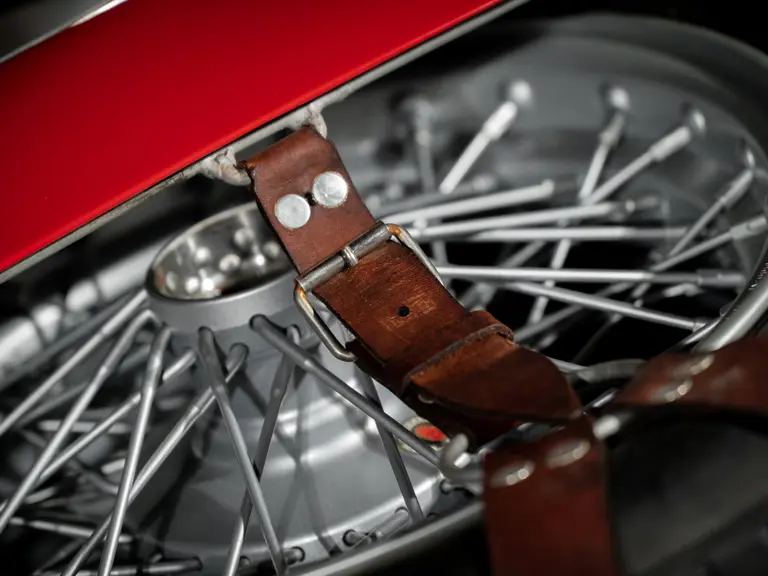

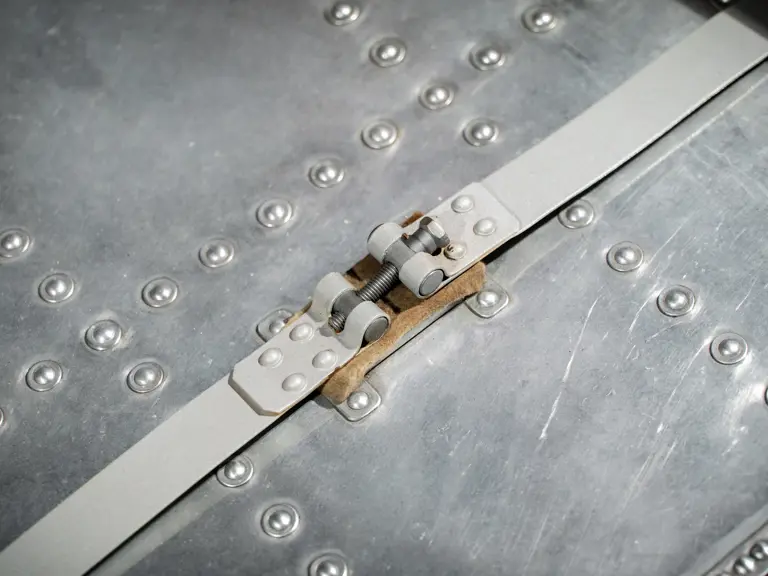

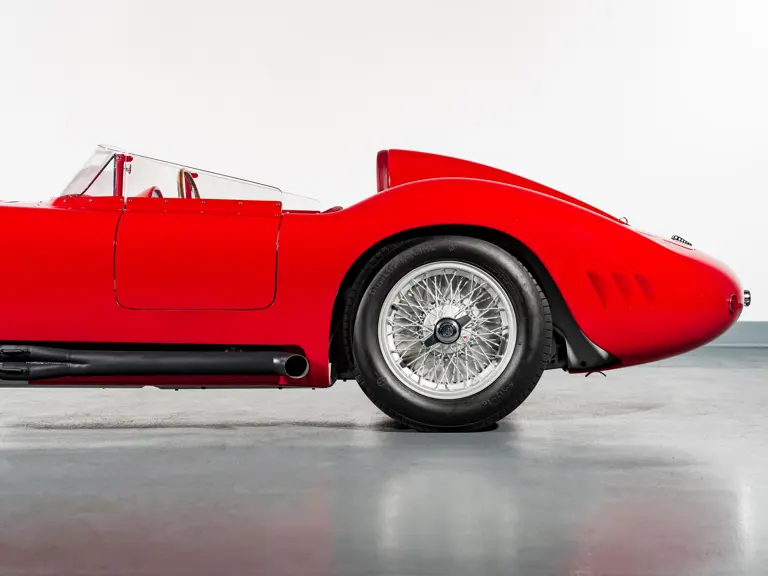
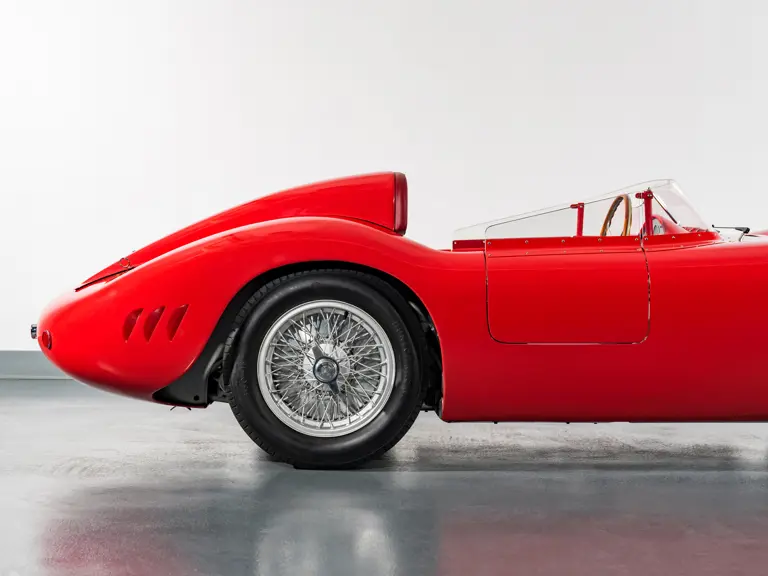


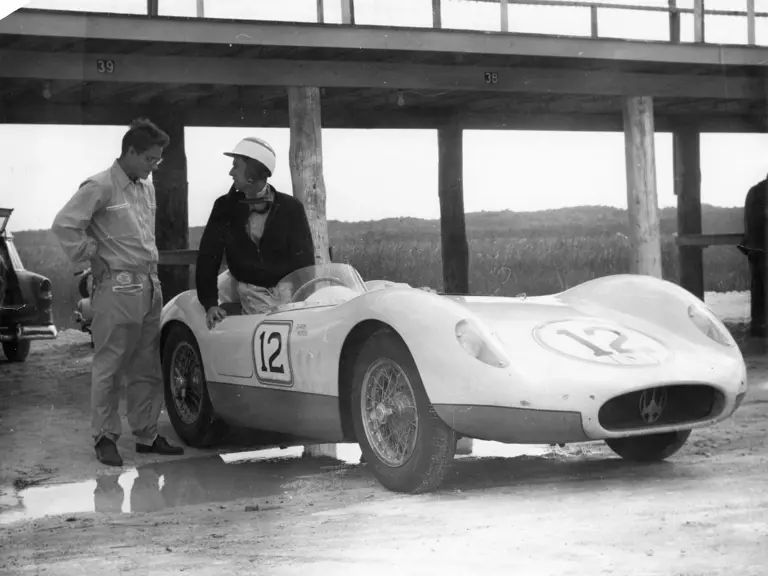
 | Monterey, California
| Monterey, California
